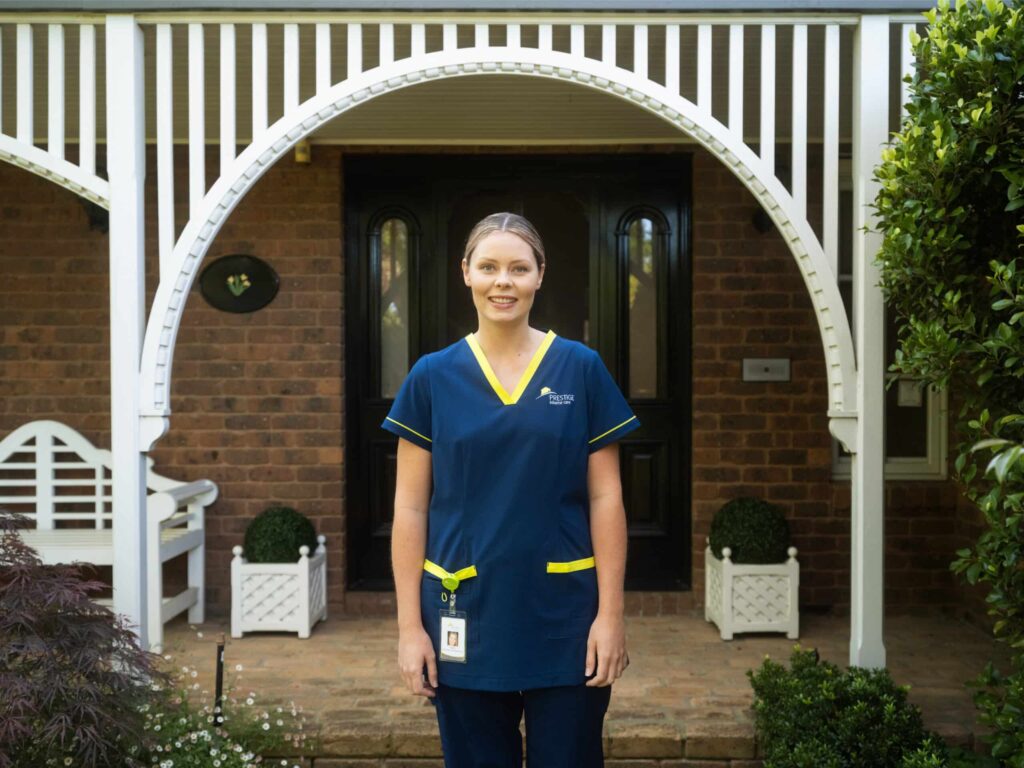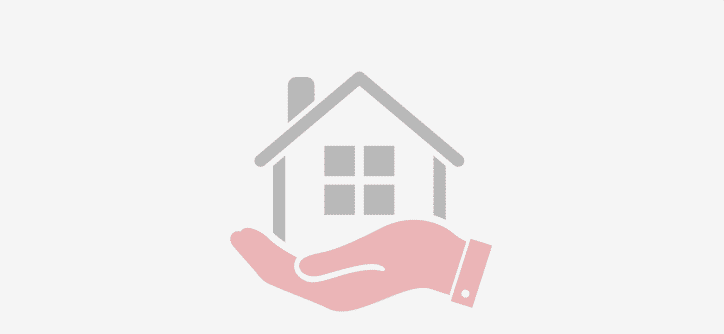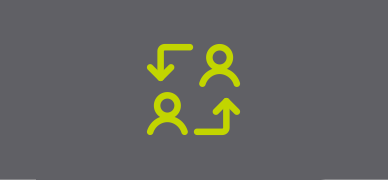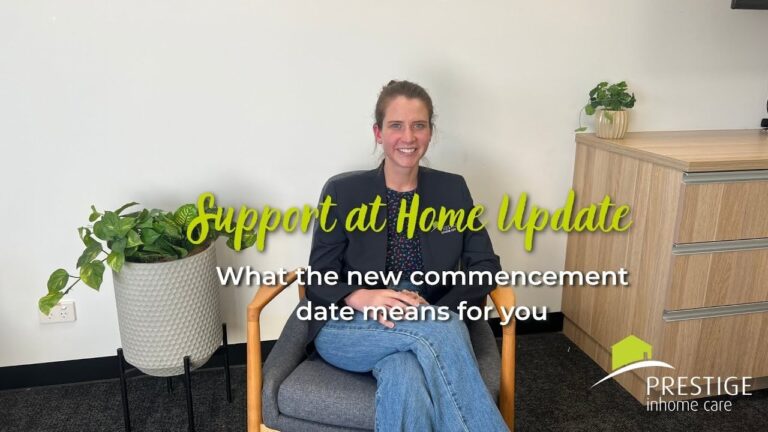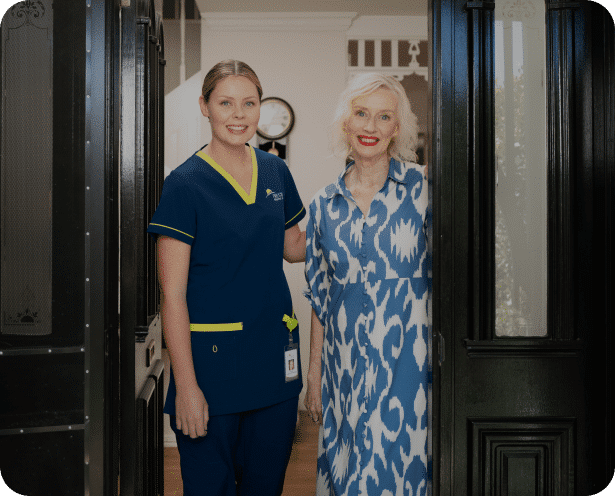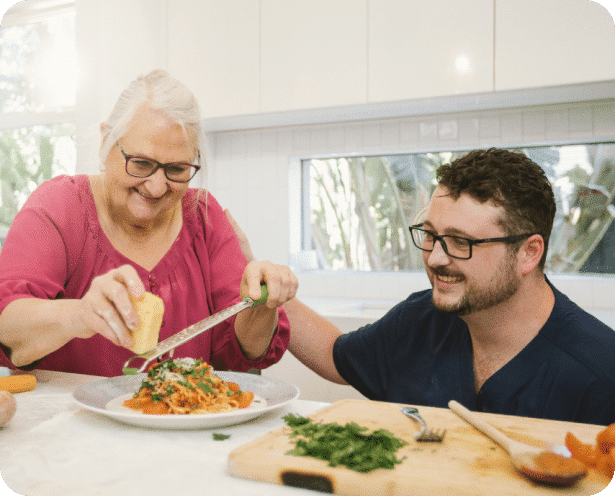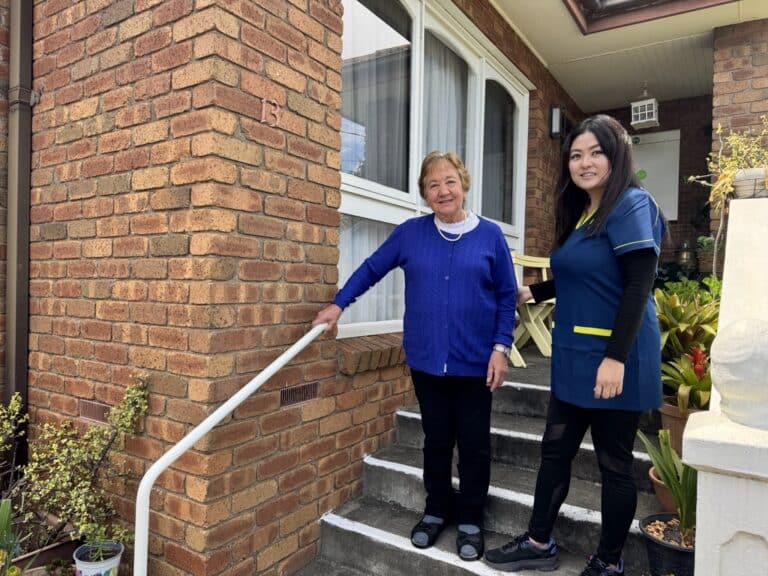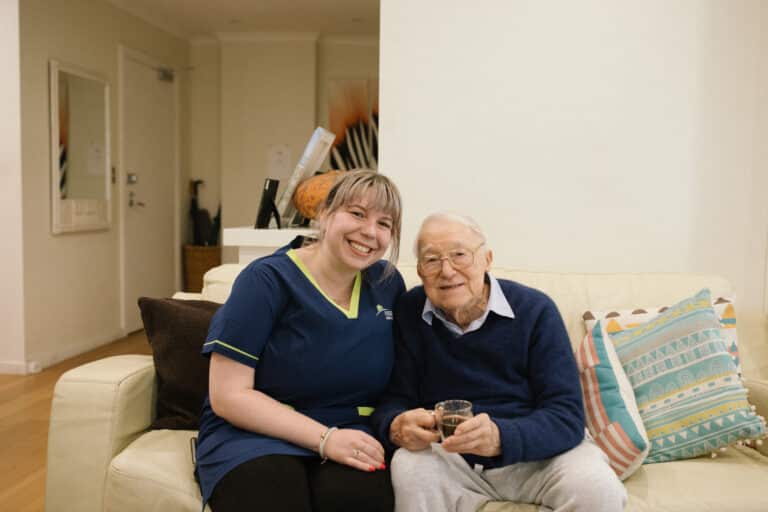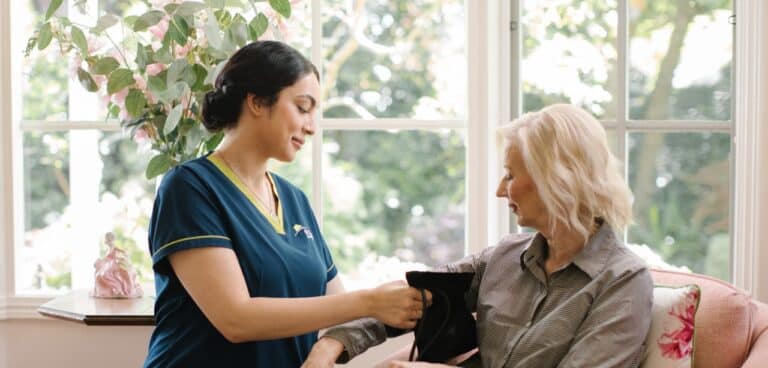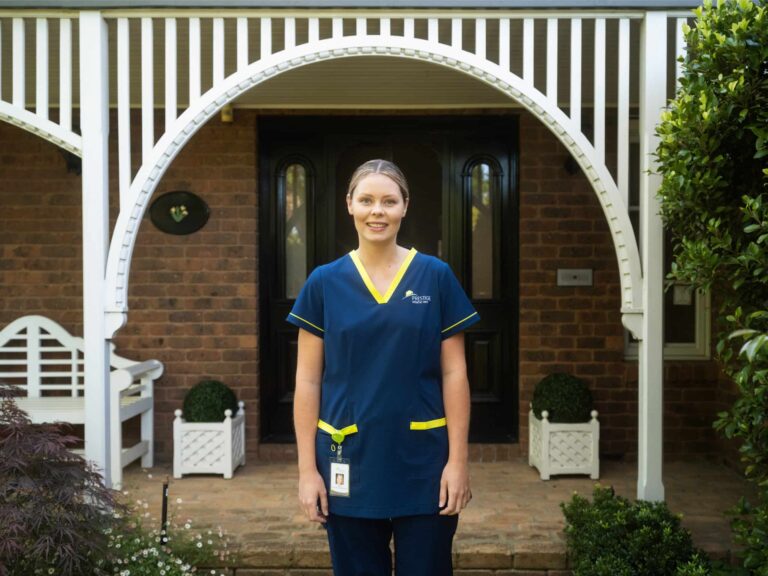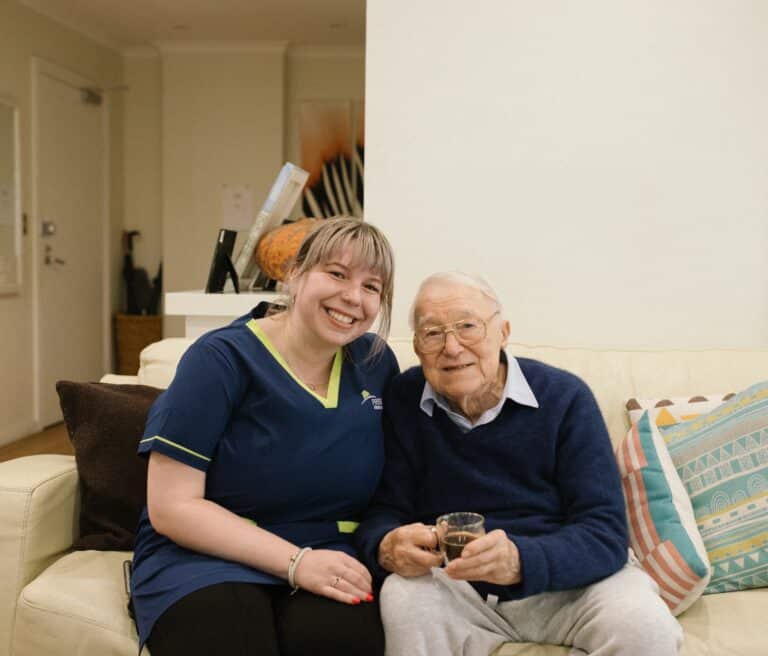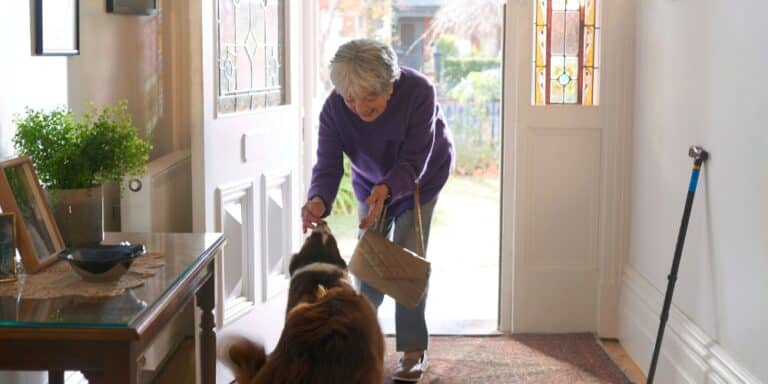Welcome to our Support at Home Information Hub.
Our hub holds all the tools you need at each stage of your journey. Support at Home replaced the existing government funded home care program for older Australians on 1 November 2025. Prestige Inhome Care is dedicated to helping you get the most value out of your Support at Home package.
Contact us today to find out more about our Support at Home services.
Why Choose Prestige?
Here are just a few of the reasons so many Australians choose Prestige
to be their Home Care Package provider.
With no lock-in contracts, you can easily stop and start care whenever you need, offering you maximum flexibility.
If you’re not satisfied with any aspect of the service or product we provide, we’ll either fix it or refund your money.
You can start or stop your services at any time and change providers at any time. You are in control.
Effortlessly change carers at your request. We’ll work with you to ensure you find the perfect match for your needs.
Emergency clinical on-call team available 365 days a year. Experience peace of mind.
Monitor your loved one’s care on our client app. Providing real time access to rosters, billing, care plans, and more.

Call us on 1300 10 30 10 to get started. Conditions apply.
Funding Classification Levels
There are 8 classification levels of funding available under Support at Home. Eligible Support at Home recipients will receive a funding classification level that will enable them to access the services they require.
| Classifications | Quarterly Budget | Annual Budget |
|---|---|---|
| 1 | $2,674 | $10,696 |
| 2 | $3,995 | $15,981 |
| 3 | $5,479 | $21,919 |
| 4 | $7,386 | $29,545 |
| 5 | $9,883 | $39,535 |
| 6 | $11,989 | $47,957 |
| 7 | $14,530 | $58,122 |
| 8 | $19,427 | $77,709 |
Compare Funding Levels
The table below is an estimate on how much the government can provide for in-home care. Government funding is a subsidy which has rules about how it can be spent and how much you can spend. Funding will vary based on your individual assessment and needs.
To find out more about our Support at Home fees, call 1300 10 30 10.
Our Services
We offer flexible, tailored support to help you remain safe and independent at home. We provide a wide range of services, from personal care and domestic support to nursing in Melbourne, Sydney, and the Sunshine Coast.
Click on the button below to see our Full Price List for Support at Home Services.
Comparing Home Care Package and Support at Home
Home Care Package
- 4 funding levels
- Monthly budgets
- Monthly budget needs to be used to cover all care, assisted technology & home modifications, palliative care and clinical requirements
- 15% Package Management Fee
- 15% Care Management Fee
Support at Home
- 8 funding levels
- 2 short-term care pathways
- Quarterly budgets
- Additional funding for assisted technology & home modifications, palliative care and restorative care
- Administration fees removed and replaced by an hourly unit rate
- Care Management Fee reduced to 10%
- New assessment process and tool
Videos
Watch our videos to learn more and stay up-to-date on the Support at Home Program.
Support at Home has replaced Home Care Packages, bringing benefits designed to help older Australians stay healthy, active, and living independently at home for longer.
The Australian Government has announced a delay to the rollout of the new Support at Home program and Aged Care Act which will now commence 1 November 2025.
From 1 July 2025, Support at Home will replace the existing government funded in-home aged care.
Tonya from Prestige Inhome Care explains what the transition to Support at Home will mean for Home Care Package recipients and their unspent funds.
Graeme’s wife, Penny, has faced various health challenges throughout her life but stays positive. Thanks to Graeme and the support from Prestige carer, Sue, Penny can still get out and about and do the things she loves.
Unsure about the upcoming changes to the aged care system and the transition to Support at Home?
Subscribe to our Newsletter
I’m on the Waitlist
If you’ve been approved for a Home Care Package after 12 September 2024 and have been notified that you are on the National Priority System, your approved funding level and place on the wait list will not change. When your funding is applied, you will transition to Support at Home on an equivalent funding level and with your approved services.
Private care while you wait
Our team can help you setup self-funded care whilst you’re on the waitlist and transfer your funding across once it’s allocated. Once you have a SAH program, we can also help you supplement your hours with private care.
Fill out our online form or call us on 1300 10 30 10.
"*" indicates required fields
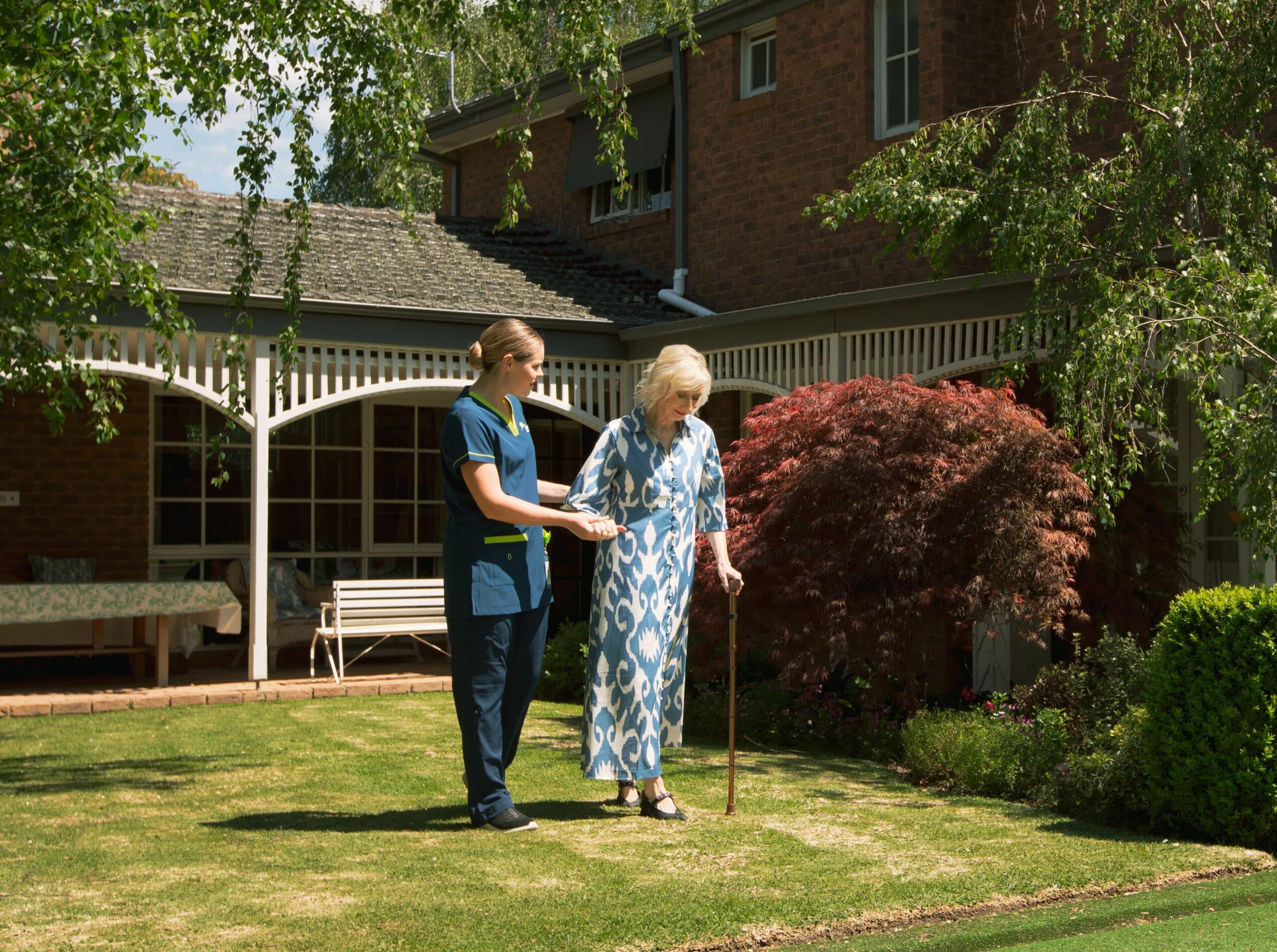
What is Support at Home?
On 1 November 2025, Support at Home replaced the existing government funded in-home care for older Australians. Support at Home incorporates new levels of funding, services and equipment options, to help older clients stay in the comfort of their own home for as long as possible.
Support at Home will bring together all current in-home aged care programs over time, and replace Home Care Packages (HCP), Commonwealth Home Support Programme (CHSP) and Short-Term Restorative Care (STRC).
Fill out our online form or call us on 1300 10 30 10.
"*" indicates required fields

I’ve got a Home Care Package
Current Home Care Package recipients transitioned to Support at Home on 1 November 2025. There’s no need for reassessment, you were automatically transferred with equivalent funding levels. Any of your unspent funds were also carried over, providing additional flexibility for accessing services or approved assistive technologies.
If your needs change and you think you require a higher level of support, you can undergo a re-assessment. Following this you will transition fully into Support at Home and its program framework with a new Support at Home funding level.
Fill out our online form or call us on 1300 10 30 10.
"*" indicates required fields

How to Apply for Support at Home
Call Prestige on 1300 10 30 10 to guide you through the process of applying for Support at Home. You can trial self-funded care while you wait for your SAH program to start.
To receive a Support at Home program, an assessment is required to determine your needs and your eligibility. If you haven’t been assessed for Support at Home yet, you (or your nominated representative) need to call My Aged Care on 1800 200 422 and register to apply for an assessment.
Other available funding through Support at Home:

Short-Term Funding Pathways
RESTORATIVE CARE
Funding to help support people to improve or maintain their independence for short-term needs. This pathway offers funding of between $6,000 – $12,000 to access goal-oriented allied health services for a temporary period of up to 12 weeks. For example, recovering from a fall, or post-hospital rehabilitation.
END-OF-LIFE PATHWAY
This funding recognises the preference many people with life limiting illnesses have to spend their final time at home. Eligible Support at Home clients can access up to $25,000 over a 3 month period for in-home care that complements their specialist palliative care program. For example, personal care, nursing services for symptom management, respite care for family members, oxygen supplies, psychological counselling.
Assistive Technology and Home Maintenance Scheme (AT-HM)
An additional funding option for equipment, products and home modifications is now available, separate from the funding you may receive through your quarterly budget. The Support at Home assessment will also consider an applicants need to access the AT-HM Scheme, with low, medium or high tiers of funding of between $500 for low requirements and $15,000 for high needs clients. For example, the AT-HM funds can be used for the purchase of back cushion supports, commode chairs, mobile hoists and face-to-face communication software.
Prestige Inhome Care’s experienced Care Managers work with you and your loved one to assess, plan and implement the services and supports you need and ensure you get the most value from your funding.
6 Steps to Begin Support at Home Services
Register with My Aged Care:
Contact Prestige Inhome Care on 1300 10 30 10 and our friendly team will support you to register on My Aged Care and apply for an assessment.
Develop Support Plan:
Aged care assessor will contact you and work with you to develop a personalised support plan.
Receive Letter:
Receive a Notice of Decision letter and move to the Priority System waiting list.
Funding Allocated:
Funding will be allocated, and you need to select a Support at Home service provider.
Contact Services Australia:
Contact Services Australia on 1800 227 475 for your contribution amount.
Enter Agreement and Start Services:
Enter agreement with your chosen provider. Your provider accepts My Aged Care referral and notifies Services Australia that you are starting care. Your services will begin.

Co-Contributions
Under Support at Home, participants will only pay contributions on the services they have received. Contributions will be based on the type of service received and the clients pension status and financial means.
The government has implemented a strong safety net for low means participants to meet aged care costs.
eg. nursing, physiotherapy
100% government funded
eg. personal care, mobility assistance, eating, remedial therapy
Full pensioner: 5%
Part pensioner: 5% – 50% based on assessment of income and assets
Self funded retiree: 50%
eg. domestic help, food prep, gardening
Full pensioner: 17.5
Part pensioner: 17.5% – 80% based on assessment of income and assets
Self funded retiree: 80%
the government will contribute around $7.80
What’s Included?
Under Support at Home, services are categorised as:
How to Switch Providers
At Prestige Inhome Care, we understand that everyone has different needs. We know that having a carer support you in your own home is a big step, and your current provider may not be the right fit.
If you’re considering switching providers, we can help you understand and navigate the steps, from notifying Services Australia, My Aged Care, right through to the transfer of services.
Here is a summary of the steps you need to take to switch providers. When you decide to change providers, you need to:
Give your referral code to the new provider
Agree on a start date with the new provider
Provide written notice to their current provider
Agree on a cessation date with their current provider
Contact your new provider
FAQ
When will Support at Home begin?
Support at Home began on 1 November 2025, replacing the Home Care Package (HCP) and the Short-Term Restorative Care (STRC) programs.
The Commonwealth Home Support Program (CHSP) continues for the time being, but will be replaced and join the Support at Home program no earlier than 1 July 2027. Those who receive CHSP funding and services will continue with their current program before transitioning to Support at Home at a later date.
This staged approach gives providers time to adjust their business operations to cater to the new program.
I have a Home Care Package (HCP). Is there anything I need to when Support at Home begins on 1 November 2025?
No, you do not need to take any action. Your HCP funding and services will continue uninterrupted. However, from 1 November 2025, you will begin to receive a quarterly budget, which will replace the monthly arrangement. The quarterly budget amount will be the equivalent to your current HCP level.
What does "Grandfathered" mean in relation to Home Care Package clients?
This is a common term used in Aged Care referring to current Home Care Package recipients and the provisions that enable a person to continue to have their circumstances assessed under the ‘old rules‘, so they are not disadvantaged.
What about the unspent funds in my HCP? Will I lose them?
No. Existing unspent funds that HCP clients have accumulated will be preserved and you can access these when you have fully utilised your quarterly budget. Any funds accrued under the Home Care Package Program are not subject to quarterly rollover limits.
What if I need to move to a higher HCP level?
If your care needs change and you believe you require a higher HCP level with additional funding for in-home care, you will need to undergo a reassessment. If you are approved for a higher package level and budget, it will be aligned with one of the new Support at Home classifications and you will transition fully into the SAH program.
Will I be better or worse off under Support at Home?
The government is instilling a no worse off principle to ensure certainty and consistency for people already in the Aged Care system. The no worse off principle will apply to people already receiving a package, or on the waiting list on 12 September 2024. This will mean:
- When Support at Home begins on 1 November, current HCP clients will retain their same level of funding and any unspent funds
- Those on the National Priority waitlist who are waiting for their funding to begin, will retain their same level of funding
- Existing HCP clients that do not pay an ITF (Income-Tested care Fee contribution), will continue to make no contributions for the remainder of their time in SAH
- Existing HCP clients that do pay an ITF will transition into SAH with special discounted arrangements if it is deemed they will be impacted financially under the new co-contribution arrangements
- HCP recipients will share in the new SAH benefits, such as capped pricing, removal of Package Management fee and Case Management fee.
I am currently on a waiting list for a home care assessment. Where do I fit in?
If you have registered with My Aged Care and have been moved to a waiting list for an assessment, you will remain on the waiting list and retain your position. When you are notified of your assessment appointment you will undertake your assessment using the SAH single assessment process.
Following your assessment, if you are approved for in-home care, you will begin your program under the new Support at Home system.
I’m now on the National Priority System waiting for my package to begin. How will SAH affect me?
If you have had an assessment and were added to the National Priority System on/after 12 September 2024, you will retain your position on the list. Once your funding is approved, you will transition to Support at Home, along with your approved funding level. You will not need to undertake another assessment.
How will I know what my funding level will be?
Following your assessment and pending your eligibility, you will receive a Support Plan and Notice of Decision. This will include your funding classification.
What are the new Funding Classifications?
There are 8 Support at Home funding classifications ranging from $11,000 at Level 1, up to $78,000 annually at Level 8.
With 8 classification levels, allocation of funding can better target the aged care needs of participants, with the ability to be re-assessed into higher levels as their needs change.
Learn more about the Funding Classifications
What funding can I receive for supportive technology and home modifications?
Under the new Support at Home program, the Assistive Technology and Home Modification (AT-HM) Scheme provides funding across three tiers, based on individual needs. Each tier offers specific financial support for necessary modifications and technology to enhance safety and independence at home. Funding is capped at levels of $500, $2000 and $15,000. AT-HM Scheme can cover support categories ie. self-care, mobility, communication.
For all funding tiers, expenditure must be used within 12 months and funding cannot accrue over time.
What other funding is available?
In addition to the 8 funding classes for Support at Home, there are 2 short-term care pathways -Restorative Care Pathway and the End-of-Life Pathway.
- Restorative Care Pathway helps people to regain function and improve independence, after a set-back impacts their everyday activities.
Clients receive a budget for $6k (or up to $12k if needed) for a 12 week episode. Examples of Restorative Care are sessions with an exercise physiologist, nutritional advisory services, educational program on home risks.
- End-of-Life Pathway funds provide access to additional services in the last 3 months of life so people can remain at home. A total of $25,000 will be available per eligible participant over a 3 month period, with a total of 16 weeks to use the funds to provide additional flexibility.
What are the Quarterly Budget cycles?
Budget quarters are:
- July to September
- October to December
- January to March
- April to June
When will I receive a statement?
Under Support at Home you will receive a quarterly statement (every 3 months) in line with your budget.
If you are a current HCP recipient, you will continue to receive a monthly statement, even though your budget comes quarterly. It is likely that you will also receive a quarterly statement (in addition to your monthly statement) that will assist you with reconciling your HCP spend.
What financial contribution will I need to make to my Support at Home budget?
When undergoing the Support at Home Assessment, an applicants income and assets will also be assessed (Aged Pension means test) to determine their ability to financially contribute to their care. Taking this into consideration, the contribution rate will depend on the supports and services a client receives.
Clinical Supports category will not attract any contribution (eg. nursing, physiotherapy). The Government will fund all clinical care.
Independence service category (eg personal care) will attract a moderate contribution, including products and equipment under the AT-HM Scheme. This will vary depending on a clients means.
Everyday living category will attract the highest level of participant contribution (eg. domestic services and gardening), and the amount of contribution will also depend on an individuals financial means.
Full pensioners will generally pay lower contributions compared to self-funded retirees.
See the governments Co-contribution fee estimator
Why are Home Care Packages changing?
The changes to Home Care Packages are a result of recommendations from the Royal Commission into Aged Care Quality and Safety. The goal is to create a fairer, more responsive system that improves wait times and access to care, allowing more people to live independently at home. There is an added focus on early intervention and goal-orientated support. These changes reflect the needs and feedback of older Australians, care providers, and industry stakeholders.
For more information see Support at Home price guidance for consumers – Community Care Review
What contributions will existing HCP clients have to pay?
Existing HCP recipients that do not pay an income-tested care fee (ITF) will continue to make no contributions for the remainder of their time in Support at Home. Existing HCP care recipients that do pay income-tested care fees will transition into Support at Home with special discounted contribution arrangements under the No Worse Off policy.
See Co-Contributions section in page above.
Key benefits of Support at Home
- Higher levels of care for those with complex needs who require more help to remain at home.
- Increased annual funding and higher funding levels (for example the maximum annual funding level is increasing from current level of $61, 440 to $78,000 annually).
- Capped service prices and removal of separate administrative fees (eg. program management and case management fees).
- Reduced wait times targeting a 3 months maximum wait by July 2027.
- Better access to preventative support through upfront funding of up to $15,000 for the Assistive Technology and Home Modification (AT-HM) Scheme —funds that can be used for items like mobility aids and home adjustments without impacting the care budget.
- Short Term Support to help older people improve or maintain their independence without the need of ongoing services.
- An improved Restorative Care Pathway, providing hospital-to-home transition support for 8–12 weeks.
- Access to a new End-of-Life Pathway that provides up to $25,000 in the final 3 months, supporting people to pass away at home with dignity.
How can I apply for Support at Home program?
Apply for an assessment by visiting My Aged Care and follow the prompts, or call 1800 200 422.
- If your application is successful, you will be referred for an assessment. Assessments are done in person, at your own home.
- After your assessment for the Support at Home program, you will receive a notice of decision that will notify you of your eligibility. This will include a summary of care needs, funding classification level, goals, and/or approval for short term supports e.g. assistive technology, restorative support.
- You will be placed on the SAH Priority System waiting list.
- Once approved to receive your finding allocation, you can move forward in beginning services with a SAH service provider.
What does a Support at Home provider do?
SAH providers assist you to access the care, support and service delivery you need according to your approved support plan. They provide expertise in the aged care system and can ensure you receive quality support, your safety and any risks are always considered in delivery of support and they remain responsible for keeping up to date with government changes, regulations and standards.
SAH providers can directly provide personal and clinical care and assist you in managing your Support at Home program through the services of a care partner (formerly known as a Case Manager).
Talk with Prestige Inhome Care, let us work with you to develop an individual support plan that best suits your needs.
Latest Support at Home News
View our latest blog posts on Support at Home below.
Prestige Inhome Care is proud to announce that from 1 November 2025, Prestige began managing Mayflower’s community-based Home Care Package clients, continuing to provide high-quality, person-centred care.
Discover how a Care Partner can support you in the Support at Home program—helping you manage your care plan, funding, and services so you can live independently and confidently.
Discover how short-term care pathways under Support at Home provide timely, targeted support that helps older Australians recover, stay safe, and maintain independence at home.
Choosing the right home care provider can be overwhelming. Prestige Inhome Care helps you navigate options with expert advice and transparent support.
From 1 November 2025, Australia’s aged care system will undergo one of its most significant transformations in decades. The New Aged Care Act puts older people at the heart of aged care, ensuring your rights, choices, and wellbeing are front and centre.
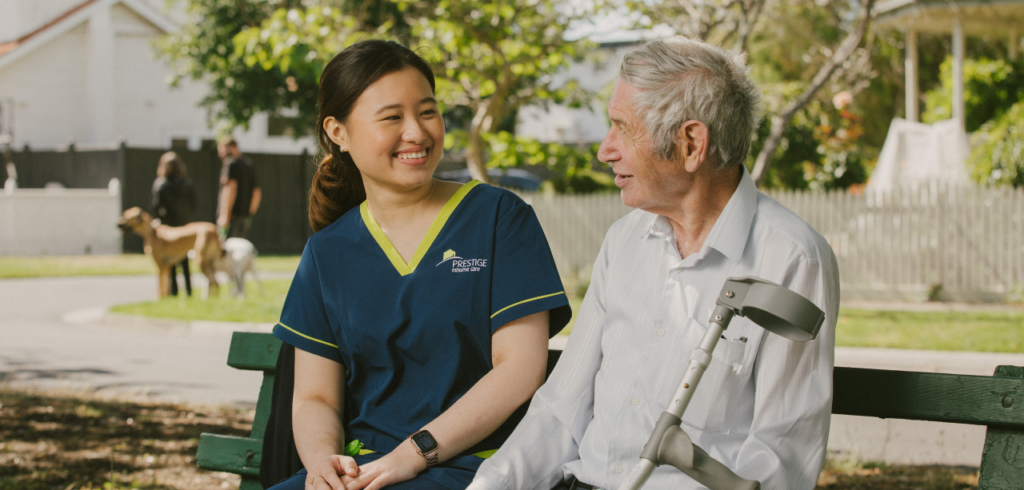
Support at Home Guide
To find out more about Support at Home, please download our guide.
What is the Prestige Process?
Speak to a Care Specialist
Book a consultation
We develop tailored care plans
We create your Care Team
Your care program begins
